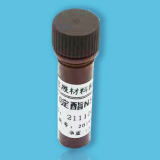Chinese VersionChina Suppliers > Hubei new DE sheng material science and technology co., LTD. > Detailed introduction of luminescent reagent acridine salt NSP-SA
- Search Product
-
-
- Region :China/Hubei
- Tel : +86-18971041571
- Fax :
- Email :vickyzhao@whdschem.com
- URL :
- Add :Guanggu United Science and Technology City C8, Ezhou City, Hubei Province
- Details for Detailed introduction of luminescent reagent acridine salt NSP-SA
-
Detailed introduction of luminescent reagent acridine salt NSP-SA
Category : Other Chemicals/Others

CAS NO : 211106-69-3 EC NO : MF : MW : Specification : White Powder Packing : 500g/bottle Product description : Acridine salt NSP-SA is a member of the luminescent reagent Acridine class compounds. As an effective chemiluminescent marker, it has obvious advantages, such as rapid and stable luminescence, high sensitivity and signal-to-noise ratio, and minimal external interference. At the same time, simple experimental operations are required for various experiments, and the obtained results have high accuracy, which plays an indispensable role in the automation of immunoassay operations. Below, we will specifically introduce it to you, and it can also be used separately from other reagents in the future. 1、 Composition and properties The luminescent reagent NSP-SA, with a CAS of 211106-69-3 and a molecular weight of 584.66, appears as a yellow powder with high solubility and stability in water. Its diluted solution exhibits purple or green fluorescence. If further diluted, it will become free acridine due to salt hydrolysis, exhibiting purple fluorescence. The acridine salt NSP-SA has a wide range of uses and can be used as a photocatalyst and in the preparation of dyes. 2、 Purpose The luminescent reagent acridine salt NSP-SA can be used in biomedical research, such as detecting markers such as proteins, nucleic acids, antigens, and antibodies. By observing the fluorescence signal in the sample with acridine salt, the presence of target molecules in the sample can be determined. In addition, pyridine salt NSP-SA can also be used in fields such as photocatalysts and dye preparation. 3、 Usage The method of using acridine salt NSP-SA is relatively simple. Firstly, the reagent needs to be mixed with fluorescent dyes to form a fluorescent labeling complex. Then, the complex is added to the sample to be tested, such as protein or nucleic acid solution. Finally, the fluorescence signal in the sample can be observed using a fluorescence microscope. Attention should be paid to avoiding issues of reagent contamination and light intensity during use. 4、 Precautions When using acridine salt NSP-SA, the following points should be noted: 1. Reagents should be stored in a cool and dry place, avoiding direct sunlight and high temperatures that may cause changes in performance. 2. Before use, it is necessary to check the purity and expiration date of the reagents. Expired reagents can affect the test results, and once a pungent odor occurs, they should be stopped immediately. 3. Attention should be paid to avoiding reagent contamination and external cross infection during the operation process. As an advantageous supplier of luminescent reagents, Desheng produces six types of acridine series products for customers to choose from comprehensively. At the same time, its purity can reach up to 98%, and its luminescence is sensitive and rapid, which is conducive to various experimental research uses. If you have any relevant intentions, please click on the website to contact us! Uses : Chemiluminescence reagent Synonyms : NSP-AS;
- more>>Other Products
-
- • Biological buffer 3- [N, N-di (hydroxyethyl) amino] -2-hydroxypropanesulfonic acid DIPSO
- • Luminol Sodium Salt
- • 4-Aminophthalhydrazide
- • acridinium ester DMAE-NHS
- • acridinium ester NSP-DMAE-NHS
- • Acridine hydrochloride NSP-SA
- • Acridine hydrochloride NSP-SA-NHS
- • NSP-SA-ADH
- • acridinium ester ME-DMAE-NHS TOOS; 3-(N-Ethyl-3-Methylanilino)-2-Hydroxypropanesulfonic Acid Sodium Salt
- • TOPS; Sodium 3-(N-Ethyl-3-Methylanilino)Propanesulfonate; N-Ethyl-N-Sulfopropyl-M-Toluidine Sodium Salt
- • ADOS Sodium 3-(Ethyl(3-Methoxyphenyl)Amino)-2-Hydroxypropane-1-Sulfonate Dihydrate
- • ADPS N-Ethyl-N-(3-Sulfopropyl)-3-Methoxyaniline Sodium Salt
- • ALPS N-Ethyl-N-(3-Sulfopropyl)Aniline Sodium Salt; Sodium 3-(Ethyl(Phenyl)Amino)Propane-1-Sulfonate; Sodium
- • DAOS; Sodium 3-((3,5-Dimethoxyphenyl)(Ethyl)Amino)-2-Hydroxypropane-1-Sulfonate
- • HDAOS; N-(2-Hydroxy-3-Sulfopropyl)-3,5-Dimethoxyaniline Sodium Salt
- • MADB N,N-Bis(4-Sulfobutyl)-3,5-Dimethylaniline Disodium Salt
- • MAOS N-Ethyl-N-(2-Hydroxy-3-Sulfopropyl)-3,5-Dimethylaniline Sodium Salt Monohydrate
- • DAB 3,3',4,4'-Biphenyltetramine Tetrahydrochloride